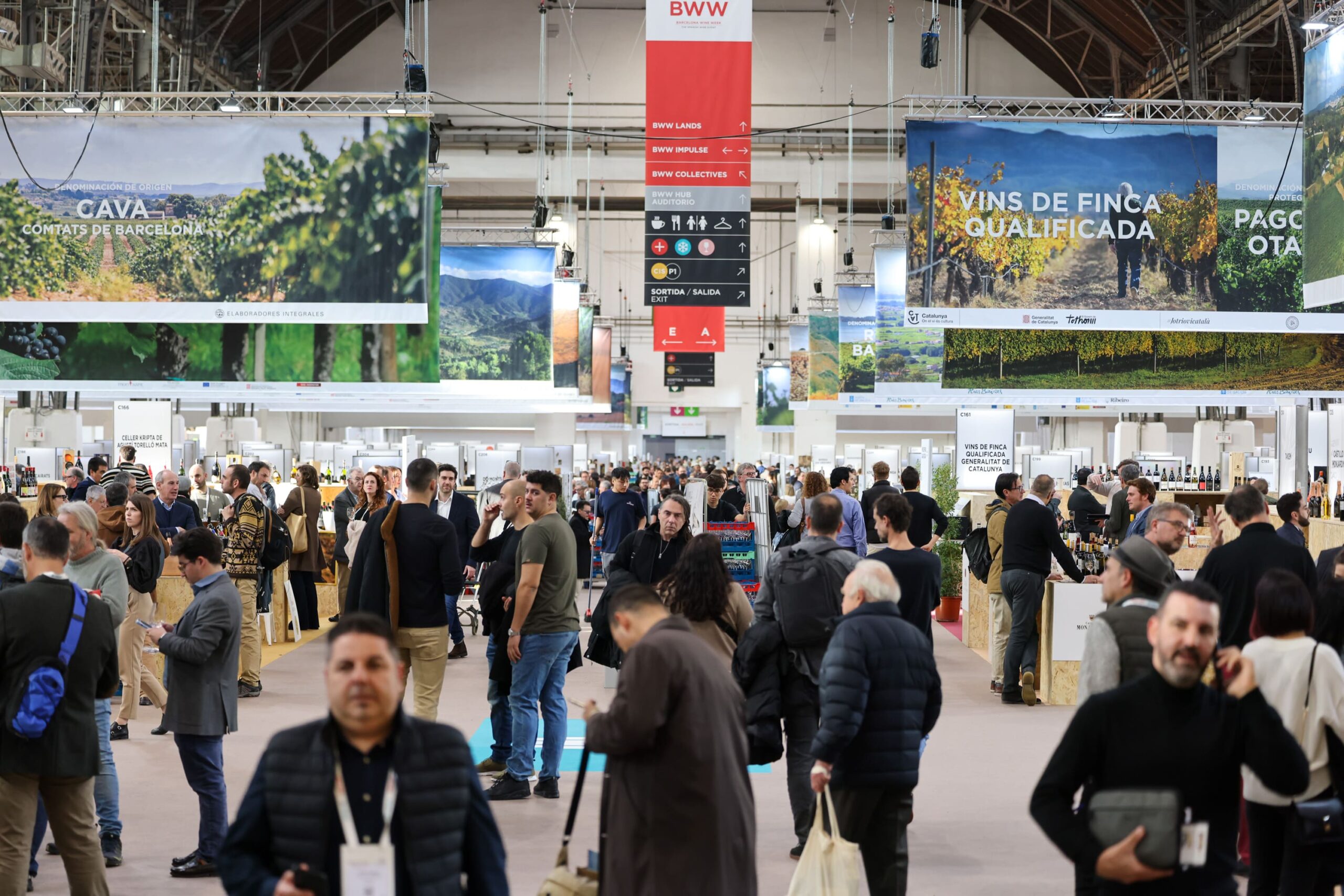Why Chianti Classico is recalling the 90s with 2024 harvest
Cold and wet conditions during harvesting in Chianti Classico this week are reminding producers of conditions 30 years ago – but they don’t appear unduly concerned; indeed, some are pleased.

Of course, the presence of regular rainfall during the final stages of ripening and over the picking period is making the harvest challenging for the winemakers in this historic wine region, but the effect on the grapes is being viewed by some as positive.
For example, Giovanni Manetti, who is president of the Consorzio Chianti Classico, as well as head of his family’s winery, Fontodi, appeared delighted at the character of the berries he has brought in so far, when speaking to db in Tuscany on Monday this week.
“It’s been a long harvest with slow ripening, which I love – it reminds me of the 90s,” he said on Monday 7 October over a glass of his Chianti Classico at Enoteca Baldi, a wine bar and restaurant in Panzano with one of Italy’s best lists.
Continuing he said, “Because night-time temperatures have been very low, we have kept the acidity, while the sugar content has increased very slowly and, finally, we have been able to reach physiological ripeness.”
He then said, “And reaching physiological ripeness at a low sugar level is a gift, and not something we have seen since the 90s, and it means that our top wines [Riserva and Gran Selezione] will have 14% on the label, not 15%, and our Chianti Classicos [Annata] will be 13% and not 14%.”
Admitting that “it’s been a very challenging vintage because there has been rain every 2-3 days”, he assured db that “the grapes are healthy,” commenting, “it’s so beautiful to see on the sorting tables this kind of quality.”
Picking – which began at Fontodi on 20 September – has yet to finish, drawn out by wet weather, in particular Tuesday this week, when the rain was persistent, widespread and heavy.
Key to an absence of fungal infections in the bunches, despite the damp conditions, has been cool nature of the weather. “Because of the low temperatures we have avoided rot,” said Manetti.
Similarly, Angela Fronti, owner and winemaker of a Chianti Classico estate based in Radda called Istine, compared current conditions in the region to those around 30 years ago.
Pointing out that it was not unusual to bring in the grapes in October in Chianti Classico, she then said that in recent decades, conditions at this time of year were “hot”, whereas in the past, “it was cold”.
“It is not normally rainy and cold like now,” she told db, “but I remember what it was like [during harvesting] in the 90s, and it was like it is now,” she added.
Even if conditions during picking this year are similar to those in the last century, she stressed that there was a crucial difference, which concerned a better understanding today of how to manage the vineyard to avoid the incidence of rot.
As an organic producer, this difference does not involve the use of systemic treatments, but techniques to open up canopies and increase air circulation around the bunches.
“I think de-leafing at the beginning of September was really important to avoid botrytis,” she said.
More generally, she commented, “The harvest been very complicated but we are fighting, and the grapes are still very good,” before admitting that this week “It’s really cold and it’s raining.”
She added, “It’s not an easy vintage, but for moment there is good quantity and quality…this is a difficult vintage but until now we have beautiful grapes.”
And, looking back to cooler, wetter harvesting conditions of the past, she said, “I remember great wines of the 90s – they were very pleasant and drinkable, so why not also this year will be the same?”
Luca Orsini, who is owner of another organic Chianti Classico producer, Le Cinciole, said that having a good site in the region was important in a vintage such as this.
“We are in the middle of harvesting and we are bringing in very high-quality grapes, but the harvest is difficult because of the weather,” he began.
Continuing, he said, “But if you have good exposure, with a high altitude, then it is easier,” explain that in a wet vintage such as 2024, such a setting means there is more wind to dry the grapes, and generally better-drainage in the soils.
While keeping a covering of grass over vineyards soils was also mentioned as important by Luca. “We have kept a grass-cover for a long time, as it encourages the vines to root deeply, and it creates a filter against the sunlight so soils don’t lose water when it’s hot, but when it rains, you get less erosion, and you can move a tractor in the vineyard when the ground is wet.”
Meanwhile, Gabriele Buondonno of Buondonno Chianti Classico expressed a logistical concern connected to the current wet conditions, when speaking to db on Tuesday this week. “It’s raining now, and we have 30% of our fruit still on the vine, and they are our best grapes,” he said. “The fruit is healthy, but we can’t wait much longer, because the pickers will have gone home.”

Elsewhere, at the organic and Kosher winery in Vagliagli, Terra di Seta (pictured above), owner Daniele Della Seta said that he was hoping for dry conditions to return before finishing the harvest.
“The phenolic ripening is excellent with what we have already picked, but the alcohol is a bit low, so 2-3 days of sun would be good,” he said on Tuesday this week, as the rain intensified.
He added, “It often rains at the end of September and early October, but then we have 15 sunny days.”
Finally, Laura Bianchi of Castello di Monsanto, said that this year “we have decided to pick by row, not by parcel,” stressing the need for careful bunch selection in the vineyard, as well as repeated passes through the estate to bring in the grapes, such is the uneven nature of ripening.
Considering more recent vintages, she said, “2024 reminds me of 2005, when there was strong acidity – and 2020 – when it rained in September – and it is a little like 2014 [a year infamous for unsually wet conditions during the summer]”.
Summing up, she said, “Part of this beautiful job is that every vintage is different from the beginning,’ before concluding, “The most important thing is to learn from each one.”
Related news
Rías Baixas achieves record sales in the US
RoboDrop: can driverless cars rescue US booze sales?
Wines of Hungary targets Korean consumers for International Aszú Day




